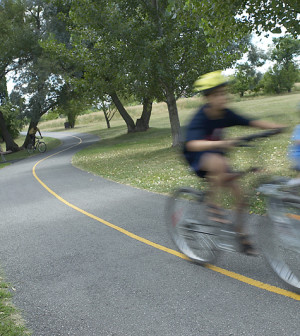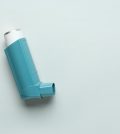- Bird Flu Virus in Canadian Teen Shows Mutations That Could Help It Spread Among Humans
- Flu, COVID Vaccination Rates Remain Low as Winter Nears
- ’10 Americas:’ Health Disparities Mean Life Expectancy Varies Across U.S.
- Short-Term Hormone Therapy for Menopause Won’t Harm Women’s Brains
- Could a Vitamin Be Effective Treatment for COPD?
- Woman Receives World’s First Robotic Double-Lung Transplant
- Flavored Vapes Behind Big Surge in U.S. E-Cigarette Sales
- Reading Beyond Headline Rare For Most on Social Media, Study Finds
- Meds Like Ozempic Are Causing Folks to Waste More Food
- Fibroids, Endometriosis Linked to Shorter Life Spans
U.S. High School Kids Abandoning Sweetened Sodas

There’s good news when it comes to American teens’ diets, with more high school kids saying no to sodas and other sweetened beverages, researchers say.
A new report from the U.S. Centers for Disease Control and Prevention found that while just over a third of kids in grades 9 through 12 drank a sweetened beverage each day in 2007, that number had fallen to 20.5 percent by 2015.
Still, more can be done to help kids avoid the empty calories of sweetened sodas and drinks, the CDC team said.
Despite declines in soda consumption, “intake of other sugar-sweetened beverages, including energy drinks and sports drinks, are increasing,” noted a group led by CDC researcher Caitlin Merlo. “And overall consumption of all sugar-sweetened beverages, such as soda, fruit drinks and sweetened coffees and teas, remains high.”
According to the report, children and adolescents get about 20 percent of their daily calories from beverages. Some of these drinks can contain nutrients such as calcium or vitamins D or C, but many “provide [only] calories with no beneficial nutrients.”
Rising child obesity rates have given new urgency to messages about the health hazards of sugary drinks, and the new study suggests those messages may be getting through.
In the study, Merlo’s team looked at 2007-2015 data from a large U.S. survey of youth health.
Besides noting the big drop in daily intake of sugary drinks, they said that teens’ daily intake of milk also declined (from about 44 percent to 37 percent of those responding), as did 100 percent fruit juice intake (27 percent to 21.6 percent).
It’s not clear what, if anything, teens are drinking instead of sodas, milk and juice, although the Dietary Guidelines for Americans currently recommends no-added-sugar beverages such as water.
The decline in soda intake was seen across all subgroups — boys and girls, all races/ethnicities and all socioeconomic levels.
What’s driving these trends? According to the researchers, new federal nutrition standards that called for the elimination of non-diet sodas in schools may have played a role.
“Community-based educational campaigns” may also be spurring more teens to kick the soda habit, Merlo’s group said.
More can still be done, however.
“For example,” the researchers said, “schools can ensure students have access to free drinking water.” Measures could include clean, well-maintained drinking fountains and rules that allow kids to bring bottled water to class.
The study was published Feb. 2 in the CDC journal Morbidity and Mortality Weekly Report.
More information
There’s more on sugary drinks’ impact on kids’ diets at the American Academy of Pediatrics.
Source: HealthDay
Copyright © 2024 HealthDay. All rights reserved.



-120x134.jpg)




